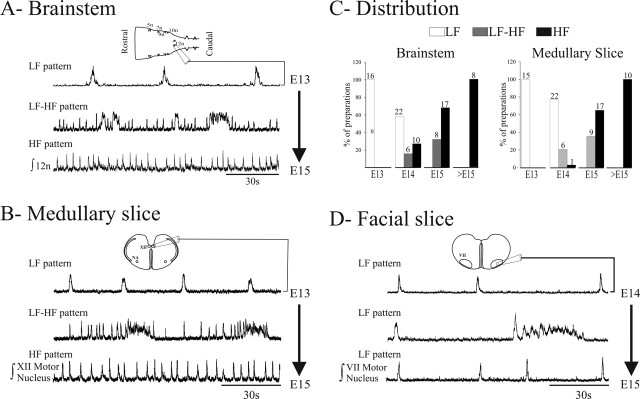Figure 1.
Rhythmic activities generated in embryonic mouse brainstem and transverse slice preparations. A, Distinct discharge patterns obtained from E13-E15 isolated brainstem preparations. Traces are integrated neurograms obtained with a suction electrode positioned on the hypoglossal motor nucleus (XII) nerve rootlet of isolated brainstem preparations (scheme on top) showing representative recordings illustrating the LF pattern (top trace), a mixed pattern composed of LF and HF bursts (middle trace), and the HF pattern (bottom trace). B, Same as in A for hypoglossal motor nucleus population activity recorded with a suction electrode positioned at the surface of the medullary slice. C, Graphs representing the distribution for the three patterns illustrated in A and B at different developmental stages on isolated brainstem preparations (left) and medullary slices (right). White bars, LF pattern; gray bars, LF-HF pattern; black bars, HF pattern. The number of preparations examined are indicated above the columns. D, Same as in B for facial motor nucleus population activity recorded with a suction electrode positioned at the surface of the facial slice. An LF pattern, but not LF-HF or HF patterns, could be recorded from transverse facial slices. 5n, Trigeminal nerve exit point; 7n, facial nerve exit point; 9n, glossopharyngeal nerve exit point; 10n, vagus nerve exit point; 12n, hypoglossal nerve exit point; VII, facial motor nucleus.

